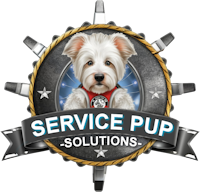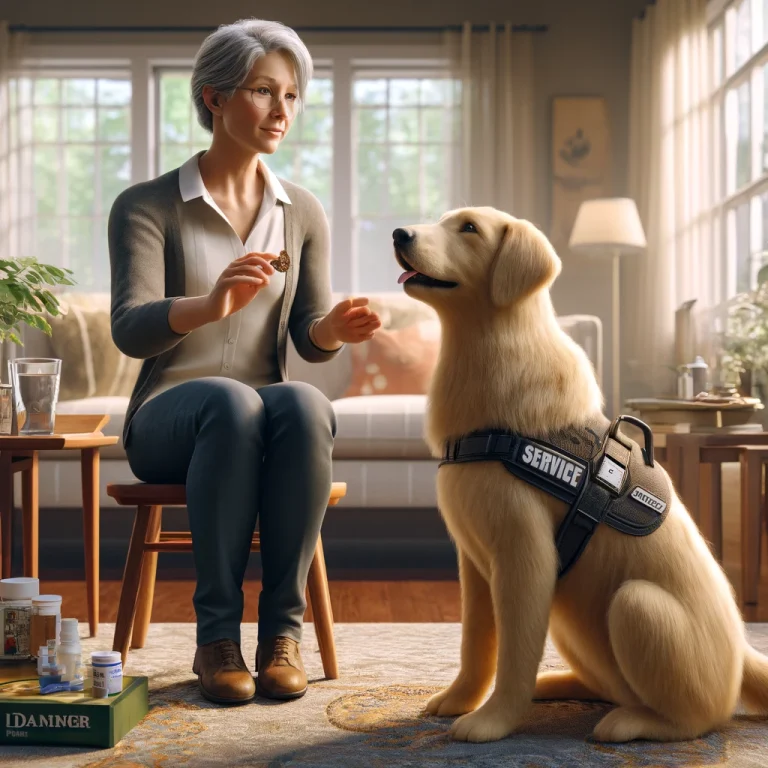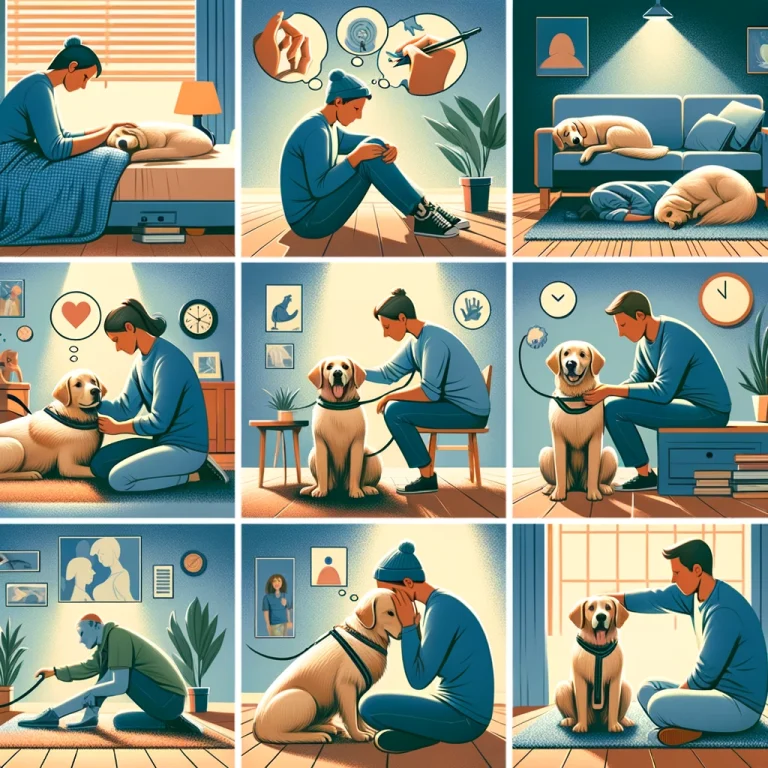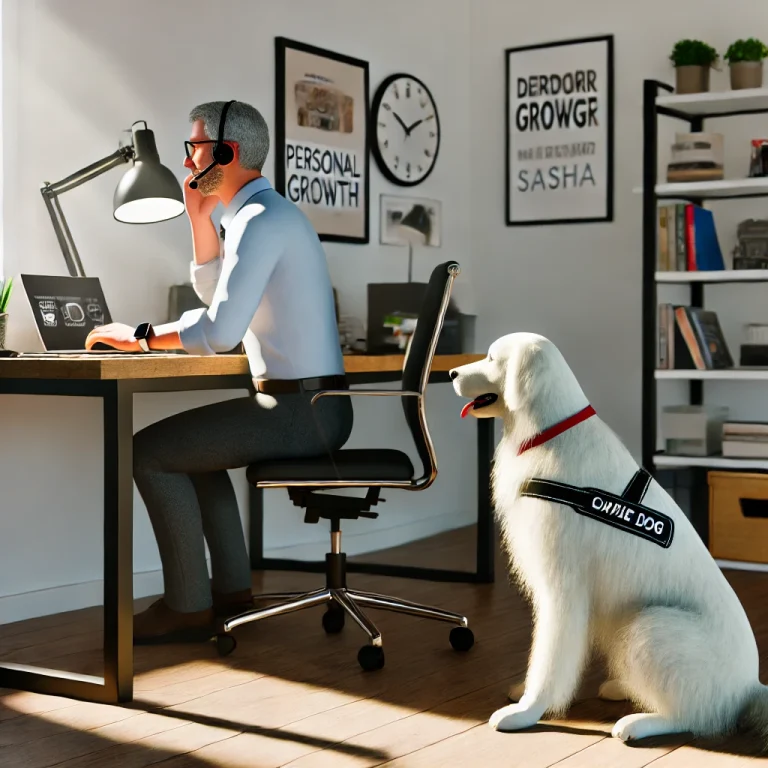Introduction
Bringing a service dog into your home is an exciting and life-changing event. These incredible animals provide invaluable assistance and companionship, helping individuals with disabilities lead more independent lives. However, to ensure a smooth transition, it’s crucial to prepare your home adequately. This blog will guide you through the essential steps of service dog home preparation, service dog safety, and creating a service dog-friendly environment. By following these guidelines, you can create a welcoming and supportive space for your new service dog.
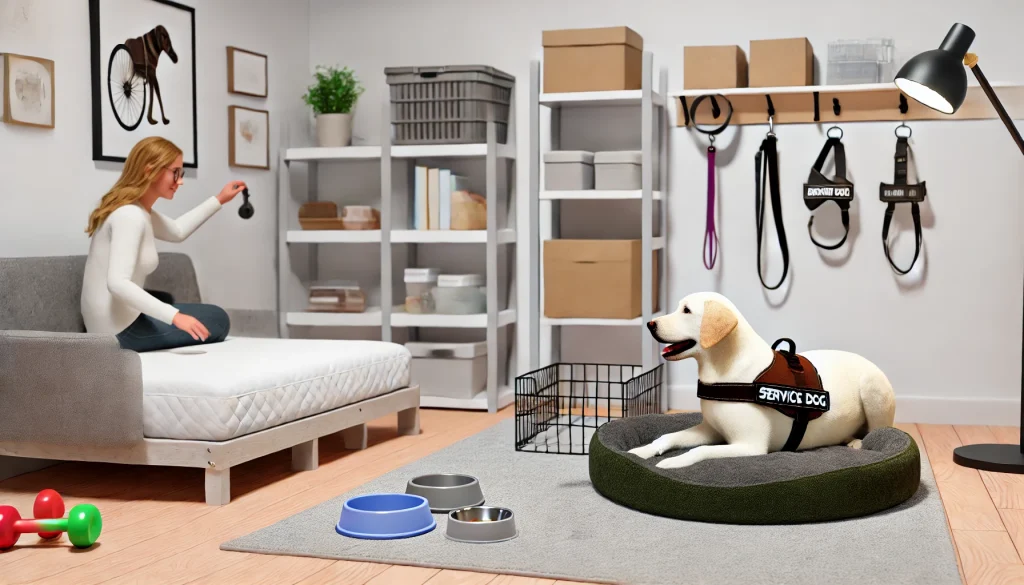
Service Dog Home Preparation
Designating a Safe Space
Creating a designated safe space for your service dog is vital. This area should be quiet, comfortable, and free from distractions. It can be a specific room or a cozy corner with a comfortable bed. Ensure this space is always accessible to your dog, providing them with a place to retreat and relax.
- Choosing the Right Spot: Select an area that is easily accessible and away from high-traffic zones. This ensures your dog can rest without being disturbed.
- Comfortable Bedding: Provide a comfortable bed or crate with soft bedding. This will be your dog’s sanctuary, where they can feel safe and secure.
Organizing Essentials
Before your service dog arrives, gather all the necessary supplies. This includes food and water bowls, leashes, harnesses, grooming tools, and toys. Having these items ready will make the transition smoother and help your dog settle in quickly.
- Food and Water Stations: Set up designated areas for food and water. Ensure these stations are in quiet, accessible locations.
- Leashes and Harnesses: Invest in high-quality leashes and harnesses that are comfortable and durable. These are essential for walks and training sessions.
- Grooming Tools: Regular grooming is important for your dog’s health. Have brushes, nail clippers, and other grooming supplies ready.
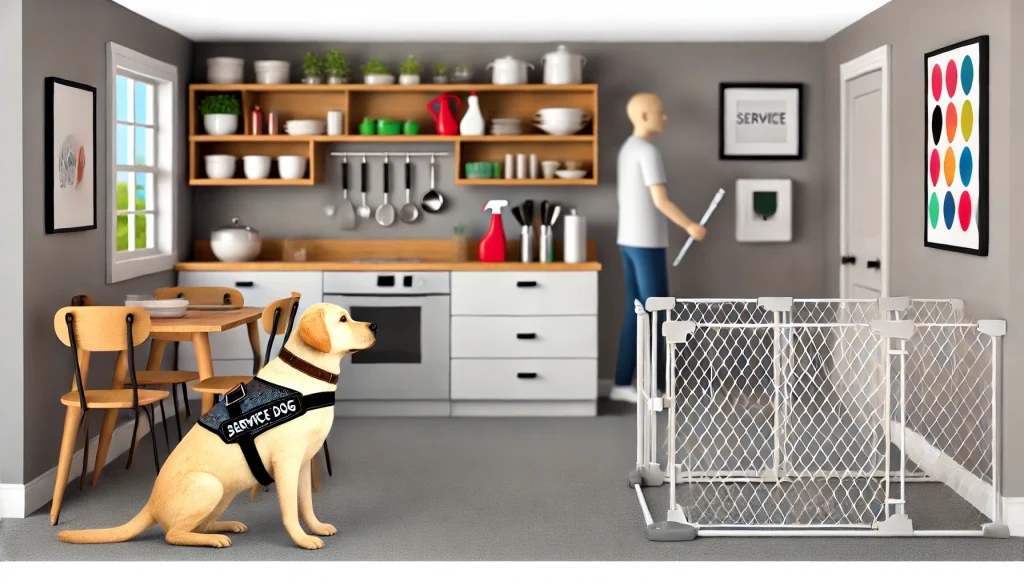
Service Dog Safety
Pet-Proofing Your Home
Just like baby-proofing, pet-proofing your home is essential for ensuring your service dog’s safety. Remove or secure any hazardous items that could harm your dog. This includes cleaning supplies, electrical cords, and small objects that could be swallowed.
- Secure Hazardous Items: Store cleaning supplies and chemicals out of reach. Use child-proof locks on cabinets if necessary.
- Hide Electrical Cords: Keep electrical cords and wires out of your dog’s reach to prevent chewing and potential electrical hazards.
- Remove Small Objects: Ensure small objects, such as coins or small toys, are kept off the floor and out of reach.
Ensuring a Safe Environment
A service dog-friendly environment is crucial for your dog’s well-being. This includes ensuring that your home is free from any potential hazards and providing a safe and secure outdoor space for exercise.
- Fencing: If you have a yard, ensure it is securely fenced. This provides a safe area for your dog to play and exercise without the risk of running away.
- Safe Flooring: Choose flooring that is safe and comfortable for your dog. Avoid slippery surfaces that could cause injuries.
- Temperature Control: Ensure your home is kept at a comfortable temperature for your dog, especially during extreme weather conditions.

Service Dog-Friendly Environment
Creating a Routine
Establishing a consistent routine is important for your service dog. Dogs thrive on routine, and having a set schedule for feeding, exercise, and training helps them feel secure and reduces anxiety.
- Feeding Schedule: Feed your dog at the same times each day. Consistency helps with digestion and overall well-being.
- Exercise Routine: Regular exercise is crucial for your dog’s health. Establish a daily exercise routine that includes walks, playtime, and training sessions.
- Training Sessions: Consistent training sessions reinforce good behavior and skills. Incorporate training into your daily routine.
Socialization and Stimulation
Service dogs need socialization and mental stimulation to stay happy and healthy. Introduce your dog to different environments, people, and other animals to help them adapt to various situations.
- Socialization: Expose your dog to different settings, such as parks, stores, and public transportation. This helps them become comfortable and well-behaved in various environments.
- Mental Stimulation: Provide toys and puzzles that challenge your dog’s mind. Mental stimulation is as important as physical exercise.
Importance of Pet Insurance and Service Dog Products
Pet Insurance
Investing in pet insurance is crucial for service dog owners. Pet insurance can help cover the cost of routine veterinary care, emergency treatments, and specialized medical procedures. This ensures that your service dog remains healthy and able to perform their tasks effectively.
- Routine Veterinary Care: Regular check-ups are essential for detecting and preventing health issues. Pet insurance can help cover the costs of these visits.
- Emergency Treatments: Accidents and illnesses can happen. Pet insurance provides financial support during emergencies.
- Specialized Medical Procedures: Service dogs may require specific treatments or surgeries. Pet insurance helps manage these costs.
Service Dog Products
Using the right service dog products can enhance your dog’s comfort and effectiveness. Consider items such as service dog vests, leashes, harnesses, and training tools. These products not only make it clear that your dog is a working animal but also ensure they can perform their tasks efficiently.
- Service Dog Vests: A vest identifies your dog as a working animal and provides pockets for carrying essential items.
- Leashes and Harnesses: High-quality leashes and harnesses are crucial for control and safety during walks and training.
- Training Tools: Tools such as clickers, treat pouches, and training collars help reinforce positive behavior and skills.
Self-Training Options
Resources for Self-Training
For those interested in self-training their service dog, resources are available through ServiceDogOwners.com. This includes training guides, instructional videos, and support forums. Self-training can be a cost-effective and personalized approach to preparing your service dog for their role.
- Training Guides: Detailed guides provide step-by-step instructions for training your service dog.
- Instructional Videos: Visual aids help you understand and implement training techniques.
- Support Forums: Connect with other service dog owners and trainers for advice and support.
Real Stories of Preparing Homes for Service Dogs
Jessica’s Experience
Jessica, who has a mobility disability, shares her story of preparing her home for her service dog, Daisy. “I made sure to pet-proof my home and set up a comfortable space for Daisy. Investing in pet insurance has been a lifesaver, covering her regular vet visits and ensuring she stays healthy.”
Mike’s Journey
Mike, a veteran with PTSD, talks about his experience preparing for his service dog, Rex. “Creating a routine and a safe environment was key. I also found the self-training resources at ServiceDogOwners.com incredibly helpful in training Rex to meet my specific needs.”
Conclusion
Preparing your home for a service dog involves careful planning and consideration. By focusing on service dog home preparation, ensuring service dog safety, and creating a service dog-friendly environment, you can provide the best possible support for your new companion. Investing in pet insurance and using the right service dog products further enhances your dog’s well-being and effectiveness.
At ServicePupSolutions.com, we are committed to helping you prepare for and care for your service dog. Whether you choose professional training or self-training options through ServiceDogOwners.com, ensuring your service dog is well-prepared and supported is essential for their success in your home.
Searching for a way to boost your income while keeping your service dog by your side? Learn how to launch a Side Hustle or new career and increase your earnings alongside your loyal companion. Click Here to find out more and start your journey today!
